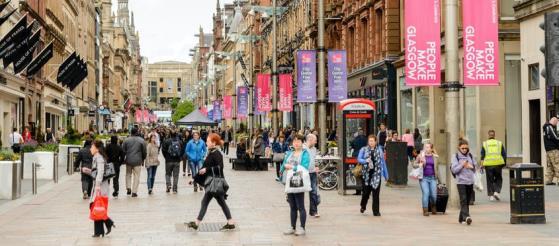
9 minute read
Chapter 2: WHAT IS PEDESTRIAN MOBILITY?
from Pedestrian Mobility
by Shrey Patel
2.2.1 HISTORY OF PEDESTRIANISATION
In ancient times, the basic form of transportation was walking. The relationship between urban design and transportation can be traced back to ancient times. The urban design of ancient cities such as Mesopotamia, Egypt, and India all emphasized the layout of proper roads and the road to victory, which are the key elements of good design. Later, the Greeks and Romans emphasized the importance of paving proper roads (Sen, 1999).
Advertisement
Since ancient times, the pedestrian zone has been a symbol of the city and the prosperity of the city. Past civilization prohibited the travel of crowded vehicles and animals because it reduced pollution, eased congestion for safety and order, and created beautiful urban areas. Until the automobile age, the two types of pollution produced by vehicles were noise and fertilizers (Rosen, 2006).
In classical times, the Roman orderly used pedestrian zones to solve the design problems of the entire empire. During the Middle Ages, northern Italy was the most urbanized region in Europe, with the largest and most prosperous cities in Europe (Rosen, 2006). The street design has become an indispensable feature of Roman cities, which paved streets with raised sidewalks. Attention to urban design aesthetics reappeared during the European Renaissance in the 15th century (Sen, 1999). The density of the industrial revolution had greatly exacerbated the problems caused by urban life. Some municipal governments banned the transportation of trolleys and trucks on certain central streets during most of the day (Rosen, 2006).
Since the Second World War, cities that restricted car travel were more prone to increased traffic activities or activities than downtown areas without pedestrian zones. At the end of the Second World War, the modern pedestrian zone was born in Kassel, Germany. With 80% of cities destroyed, city planners see a golden opportunity.
In the following years, most German cities and many other European countries established pedestrian zones. The Dutch invented pedestrian compromise zones in residential areas, called woonerf, which is popular throughout northern Europe. Cars and pedestrians share the road. Pedestrians are the priority users in this area. As long as the car is not speeding while walking, it can be allowed to drive at any time. Subsequently, city planners around the world developed this concept in urban planning for pedestrians.
2.2.2 TYPES OF PEDESTRIANISATION:
There are mainly three types of pedestrianisation:
- Full-time pedestrian streets - Part-time pedestrian streets - Traffic calming streets
1. FULL-TIME PEDESTRIAN STREETS:
In this design, vehicles are completely prohibited from entering the street, and there are generally services at the rear of the street. In most cases, only emergency service vehicles are allowed.
Figure 12.Buchanan Street (Glasgow, Scotland) (source: https://www.afar.com/magazine/the-10-bestpedestrian-streets-around-the-world) (Date: March 20,2021)
Figure 13. Carnaby Street (London, England) (source: https://www.afar.com/magazine/the-10-bestpedestrian-streets-around-the-world) (Date: March 20,2021)
Figure 14. Dublin City Centre (source: https://www.thejournal.ie/pedestrianised-streets-indublin-city-5139746-Jul2020/ ) (Date: March 20,2021)
2. PART-TIME PEDESTRIAN STREETS:
Part-time pedestrian streets refer to streets where vehicles are allowed to pass onlyduring a certain period. Street parking is not allowed, but loading docks can be used.
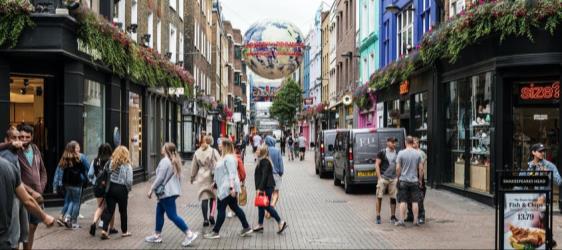
3. TRAFFIC CALMING STREETS:
The third form of pedestrian zone is a street that calms traffic. They are used to reduce the range and speed of road vehicles. There are no vehicle traffic restrictions, but the trails have widened and parking spaces have been reduced. To reduce the speed of vehicles, various traffic mitigation measures have been adopted. They include speedometers, narrower lanes, and use different road textures and colours to remind drivers that they are in a calm traffic zone.
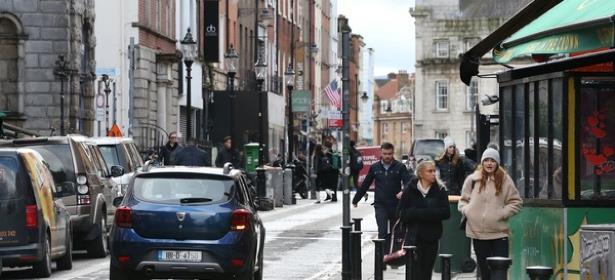
2.3 UNDERSTANDING PEDESTRIAN GROUPS
Before planning and designing any pedestrian equipment, it is important to understand the different pedestrian groups and their specific needs. Pedestrians can be classified according to their ability to use walking facilities:
- Children; - Disabled people;
- Elderly people; - The rest/ Others.
2.3.1 CHILDREN
Children use the walking facilities to get to and from school and use the recreational facilities when accompanied by adults or alone. Children are often impulsive when making cross-cutting decisions. Compared to adults, young children are less likely to be noticed by speeding drivers due to their shorter stature.
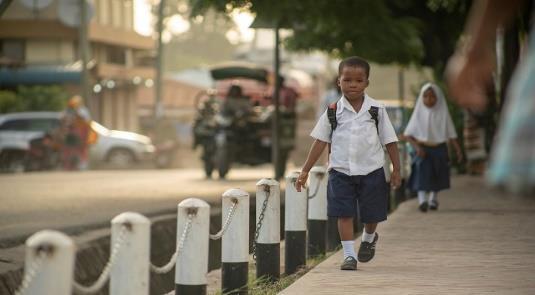
Figure 15. Use of pedestrian facilities by children (source: https://thecityfix.com) (Date: March 20,2021)
Figure 16. Use of pedestrian facilities by an elderly person.(source: https://www.piqsels.com/en/publicdomain-photo-faipj) (Date: March 20,2021)
Figure 17. Use of pedestrian facilities by a disabled person(source:https://www.shutterstock.com/handicap -man-using-wheelchair-on-sidewalk) (Date: March 20,2021)
Figure 18. Use of pedestrian facilities by adults. (source: https://qz.com/1738647/five-words-in-theenglish-language-people-use-wrong) (Date: March 20,2021)
2.3.2 ELDERLY PEOPLE
Elderly people travel more than other groups of people. Compared with other groups, the elderly usually respond more slowly and at a slower pace. Vision may be impaired, and walking stability may decrease. Some elderly people can also use walkers. (Such as hands, walking sticks, etc.)
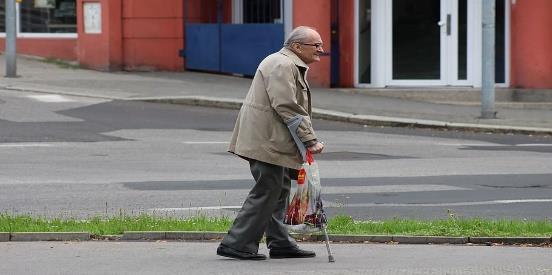
2.3.3 DISABLED PEOPLE
Disabled people can be people with different restricted abilities such as visually impaired, walking disabilities (people on wheelchairs or crutches), etc. Disabled people as any others, having their “right to movement”, should be able to use any pedestrian facility.
2.3.4 THE REST
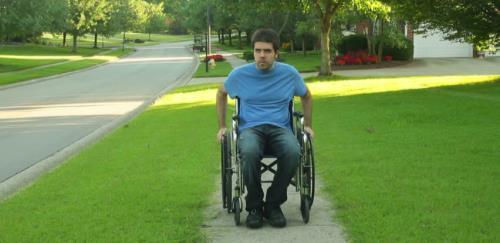
The rest are ordinary adults, and their ability to walk safely has not been affected. These people have an average walking speed of 4 feet/second (or 1.22 m/s or 4 km/h) and are expected to make safe judgments when walking on pedestrian facilities. Although this group of people accounts for the majority of pedestrians, the needs of all other groups of people should always be carefully considered in the planning and design of all pedestrian facilities.
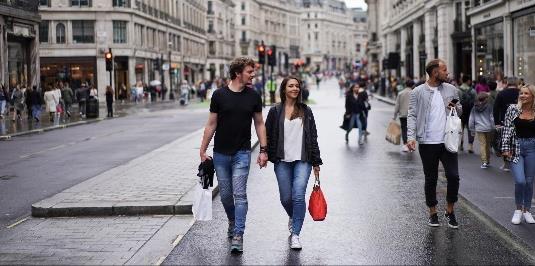
2.4 FACTORS THAT SHAPE THE PEDESTRIAN ENVIRONMENT
The pedestrian environment is regulated at the national and local levels. Various agencies are responsible for different aspects of the pedestrian environment. Coordination, differences in institutional structure, and financing systems will affect the government’s ability to design, construct, and maintain a pedestrian environment. Design and management interventions have an impact on multiple elements of the pedestrian environment. It is necessary to plan and manage the key factors affecting the pedestrian environment related to street design, construction, land use structure, and network design to ensure proper design and sustainable access to infrastructure.
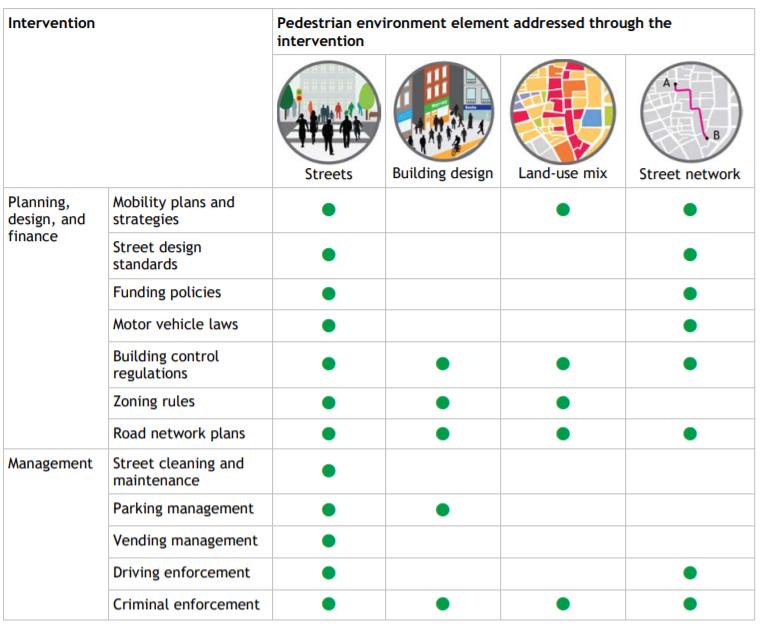
Figure 19.Planning and management factors affecting the pedestrian environment. (source: www.worldbank.in/pedestrian mobility for urban growth ) (Date: April 03,2021)
2.5 CLASSIFICATION OF PEDESTRIAN ACTIVITIES
• Shopping: If the person is in the centre to come to the store and buy.
• Work purchases: people who are buying while taking a break, or a person who is buying after leaving a job.
• Shopping to work: A person who is buying on the way to work. • Part of the work: A trip made as part of the work.
• Personal Business: A trip related to someone's business. • School / University: A person going to school and university.
• From school/university: University, the person who is back from school to college.
• Meeting with friends: A person who is going to meet friends on the road.
• Leisure: People walking on the street for joy, like window shopping.
• Daily client: A person visiting the city as tourists and visitors. •Other: It is important to specify other visitors for classification purposes. These are walking on the street, using the bus, and doing other activities on street.
2.6 IMPACTS OF PEDESTRIANISATION
The pedestrian zone is designed to improve the safety and mobility of pedestrians. In addition, the pedestrian zone has many benefits. Generally, we can divide the advantages of pedestrian zones into three categories:
- Environment impact - Economic impact - Social impact
2.6.1 ENVIRONMENTAL IMPACTS:
In terms of environmental goals, pedestrian zones help to reduce air and noise pollution, because they will reduce the number of cars and will become dependent on motor vehicles. Nowadays, most large cities face air and noise pollution, which will make them unpleasant and cause danger to residents. Pedestrian specialization can promote walking as a fuel-free mode of transportation, so we can also save fuel. Studies have shown that the pedestrian zone model increases the use of public transportation, such as bus and rail transportation. Generally, when pedestrian zones are implemented, there may not only be more space for pedestrian zones on the street, but it also provides an opportunity to plan more planting areas
and improve street furniture and landscapes. All of these will help beautify local streets and create a better environment.
2.6.2 ECONOMICAL IMPACTS:
Regarding the economic impact, we should say that pedestrianisation will have a series of impacts. First of all, for most large cities with heavy motor vehicle traffic, the government and the private sector must suffer huge economic losses in terms of air pollution, productivity loss costs, and medical expenses every year. After the pedestrianisation, the volume of motor vehicle traffic is reduced, and the pollution is reduced, which may reduce the cost incurred. Doctors have issued various awareness and declarations on air pollution and its dangers, and have spent a lot of money to treat diseases related to air pollution. Therefore, less air pollution leads to less related medical expenses. Another economic impact of pedestrianisation is retail revenue in the area. Statistics show that after the closure of vehicle traffic in an area, the retail turnover rate has generally increased. In addition, it has been seen that not only the profit of the retailer increases but also the role of rental income and occupancy rate. The main reason is that pedestrians can more easily shop and enjoy window shopping without worrying about vehicles. In some places with walking plans, people will welcome coffee shops and retail food stores. Cities with pedestrian areas usually have entertainment venues that attract tourists. Less pollution, a pleasant walking environment, and other facilities such as cafes on the sidewalks, fountains, or other street furniture, make the area a popular attraction for locals and tourists.
2.6.3 SOCIAL IMPACTS:
The implementation of pedestrianisation will have many social impacts. First, it helps promote walking as a means of transportation. People generally do not walk, because walking itself does not include a good experience of motorized traffic and narrow, crowded sidewalks. In fact, in today's urban life, people walk less often than before and rely on private cars rather than other means of public transportation. As a result, many people do not get enough physical exercise. Health experts recommend that adults get 30 minutes of physical activity at least 3 times a week. This can be done by walking because it is good exercise. Doing pedestrianisation will bring many physical benefits, such as preventing being overweight, reducing your risk of heart disease, and strengthening your bones. The pedestrianized streets of many cities have also become cultural and entertainment squares where people meet and greet, not only in normal times but also during holidays and festivals. Car-free streets, in many cases through landscaping, street facilities, and sidewalks, help create a comfortable environment for people to participate in various social activities. Another social impact of pedestrianisation is the segregation of people from vehicles, which can improve the safety of pedestrians and traffic.







